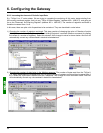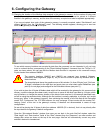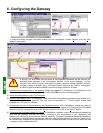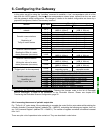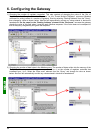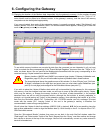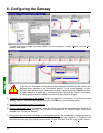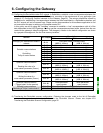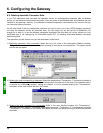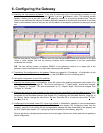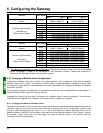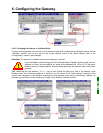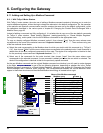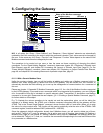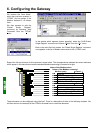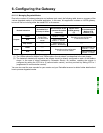
58
6. Configuring the Gateway
6.9. Deleting Aperiodic Parameter Data
If your PLC application does not need the aperiodic service for reading/writing parameter data on Modbus
slaves, you can delete the associated commands. If you also intend to add Modbus data, and therefore use new
locations in the gateway’s memory, it is preferable to delete the aperiodic commands from the start, so that you
can reuse the memory locations.
On the other hand, if the only configuration operation you wish to carry out on the LUFP9 gateway consists of
not using the aperiodic service for parameter data, you can simply not use this service in RsNetWorx. Go
straight on to step 8). In fact the Modbus exchanges associated with this setup will not be carried out if the
associated data is not changed by the DeviceNet master PLC. So deleting associated Modbus commands
becomes optional.
The operations you will need to carry out are described in order below:
1) Displaying parameter data commands: Select the very first node of the downstream Modbus network,
“TeSys U n°1”, and expand the tree structure showing its commands and transactions. The screen should
look like the one below:
2) Deleting the read command for a parameter: Select the personalized “Transactions 1” command and delete it
with the “Del” key (or “Delete” from the menu whose name corresponds to the name of the selected node).
A request for confirmation appears, asking you whether or not to proceed deleting the “Transactions 1”
command. In this case confirm with the “Yes” button.
3) Deleting the write command for a parameter: Back in the main AbcConf window, the “Transactions 1”
command has been deleted. The second personalised command, “Transactions 2” is automatically renamed
“Transactions 1”, but retains all of its setup. Now delete this one in the same way as you did with the previous
command.



